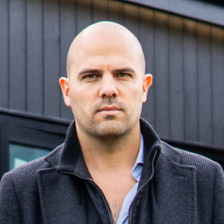Why Energy Rebates Matter for Bay Area Office Renovations
Energy costs in the Bay Area continue to rise, with commercial electricity rates among the highest in California.
For companies planning renovations, energy-efficient upgrades are no longer just about sustainability — they’re a financial strategy.
In 2025, multiple rebate programs and tax incentives are available to businesses upgrading HVAC, lighting, insulation, and renewable energy systems. Knowing how to leverage them can shave tens of thousands of dollars off project costs.
Major Energy Rebate Programs for Bay Area Businesses
1. PG&E Business Energy Efficiency Rebates
Pacific Gas and Electric offers rebates for:
- LED lighting upgrades
- High-efficiency HVAC and chillers
- Variable frequency drives (VFDs) for motors and pumps
- Refrigeration and kitchen equipment
Rebates are typically prescriptive (set dollar amounts) or custom (based on energy savings).
2. BayREN Business Programs
Bay Area Regional Energy Network (BayREN) provides:
- Cash rebates for energy-efficient lighting, heating, and cooling upgrades
- Technical assistance for small to mid-sized commercial properties
- Additional incentives for multifamily and mixed-use buildings
3. California Energy Commission (CEC) Incentives
CEC supports larger projects through:
- Low-interest financing for clean energy retrofits
- Grants for innovative technologies (e.g., solar + storage systems)
- Compliance guidance for Title 24 energy code
4. Federal IRA Tax Credits (Inflation Reduction Act)
The IRA provides significant tax incentives for:
- Solar installations (30% credit)
- Battery energy storage systems
- Heat pump upgrades and energy-efficient building envelopes
5. Local Utility and City Programs
Cities like San Francisco, Palo Alto, and San Jose run local rebate programs, often stacking with state and federal incentives for maximum benefit.
Eligible Energy-Efficient Upgrades
- LED and smart lighting systems with occupancy sensors
- High-efficiency HVAC and air handling systems
- Building automation and energy management controls
- Solar panels and battery storage solutions
- Water-saving fixtures that reduce hot water energy load
- Advanced insulation and low-emissivity windows
How to Maximize Your Rebate Savings
Step 1: Conduct an Energy Audit
Identify which upgrades qualify for rebates and prioritize high ROI measures (e.g., lighting and HVAC).
Step 2: Stack Incentives
Combine federal tax credits, state rebates, and local utility programs to maximize total savings.
Step 3: Time Your Application
Apply before starting construction — many programs require pre-approval.
Step 4: Work with Approved Contractors
Some rebates require installations by program-certified contractors to qualify.
Step 5: Document Everything
Keep receipts, equipment specs, and energy modeling data for verification.
Cost and ROI Impact
- Typical rebates cover 10-30% of upgrade costs.
- Combining programs can lead to 40% or higher savings on qualifying improvements.
- Payback periods for major retrofits (e.g., HVAC + lighting) often drop from 7-8 years to 4-5 years with rebates.
Common Mistakes to Avoid
- Starting work before approval: Disqualifies most rebates.
- Overlooking custom rebates: Prescriptive programs are common, but custom rebates can yield higher payouts for unique projects.
- Incomplete documentation: Missing forms or specs can delay or deny rebate payments.
Case Study: Mountain View Tech Office
A 20,000 sq ft office remodel in Mountain View upgraded to:
- LED lighting with occupancy sensors
- High-efficiency HVAC system
- Rooftop solar with battery backup
Results:
- Secured $120,000 in combined rebates (PG&E, BayREN, federal tax credits)
- Reduced annual energy costs by 35%
- Achieved near net-zero energy status, boosting company ESG ratings
Future Trends in Energy Incentives
- Increased funding: IRA programs expand through 2032, with enhanced credits for commercial properties.
- Performance-based rebates: More programs rewarding actual energy savings rather than prescriptive measures.
- Electrification incentives: Rebates for replacing gas systems with electric heat pumps and induction cooking.
Final Thoughts
Energy efficiency rebates are one of the fastest ways to reduce renovation costs and future-proof Bay Area offices.
By understanding available programs and planning early, businesses can unlock significant savings while aligning with sustainability goals.
GC44 specializes in guiding clients through rebate eligibility, application, and integration — ensuring every remodel maximizes financial and environmental returns.





